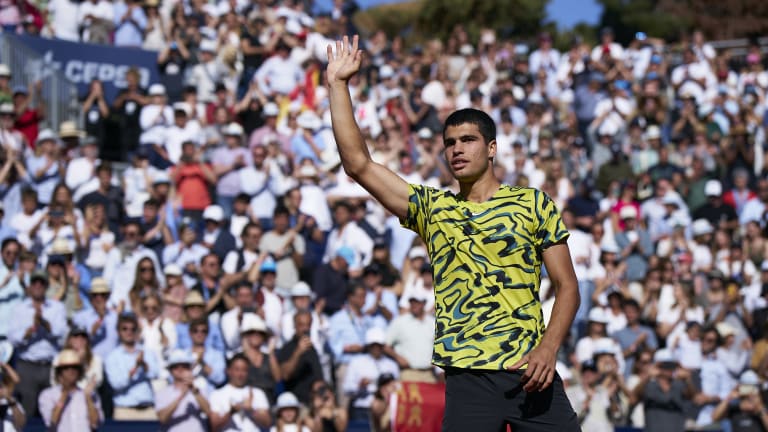Weekend Winners
Weekend Winners: Carlos Alcaraz, Iga Swiatek find a gear too good for even their best opponents
By Apr 23, 2023Weekend Winners
Joao Fonseca and Jannik Sinner played their best when it counted in Basel and Vienna
By Oct 26, 2025Weekend Winners
Coco Gauff again treated Asia like a practice session—and again left with a big title, in Wuhan
By Oct 12, 2025Weekend Winners
“We’re working on new things,” Jannik Sinner says after Beijing triumph
By Oct 01, 2025Weekend Winners
Carlos Alcaraz says 2025 is his "best season so far without a doubt" after winning in Tokyo
By Sep 30, 2025Weekend Winners
Clutch play wins team comps for Jasmine Paolini, Taylor Fritz; Iga Swiatek shines in Seoul
By Sep 22, 2025Weekend Winners
Teen queens crowned: Iva Jovic, Tiantsoa Rakotomanga Rajaonah claim first WTA titles
By Sep 15, 2025Weekend Winners
How Carlos Alcaraz put a 'difficult month' behind him with his first Monte Carlo title
By Apr 13, 2025Weekend Winners
With clay titles, Jenson Brooksby and Jessica Pegula made 2025 all the more promising
By Apr 07, 2025Weekend Winners
Jessica Pegula and Emma Navarro got up after early-season stumbles to win their first titles of 2025
By Mar 03, 2025Weekend Winners: Carlos Alcaraz, Iga Swiatek find a gear too good for even their best opponents
Last year’s No. 1s successfully defended their titles in Barcelona and Stuttgart, and showed they still have a gear or two that even their best opponents can’t find.
Published Apr 23, 2023
Advertising
Advertising

Swiatek scored her fifth win in seven career meetings against Sabalenka to successfully defend in Stuttgart.
© Getty Images
Advertising
Advertising
Advertising

Alcaraz improved to 4-0 against Tsitsipas with his Barcelona triumph.
© Getty Images